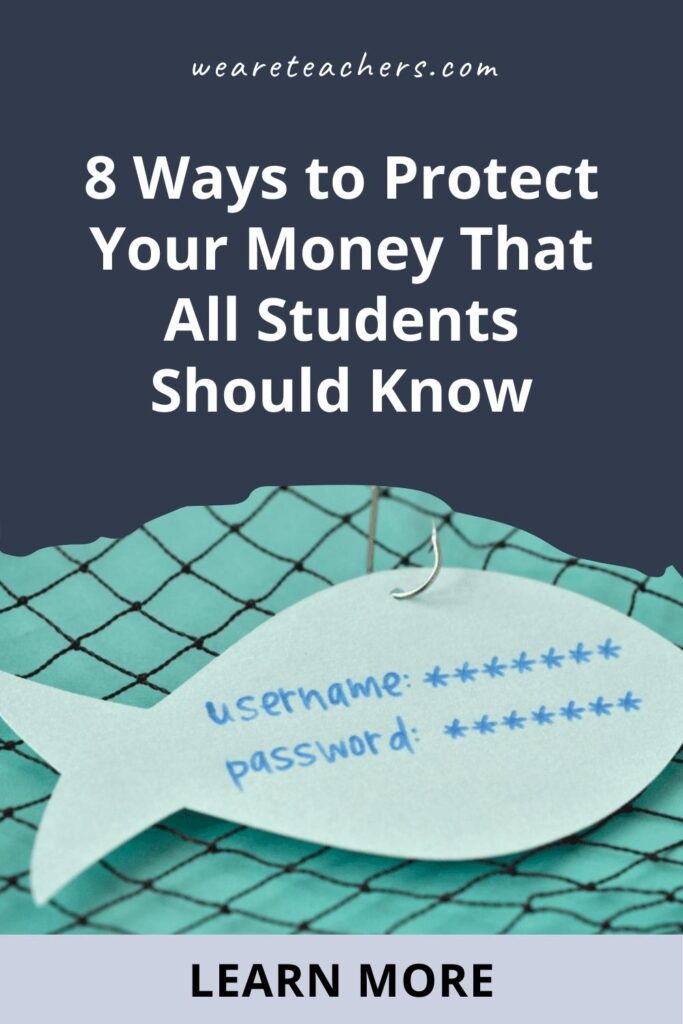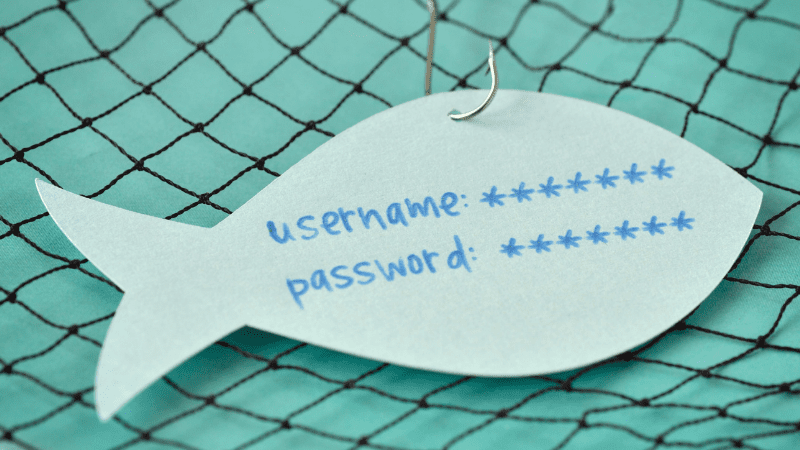The world is a different place for students these days, especially when it comes to ways we deal with money. Technology has made banking infinitely more convenient, but along with this convenience comes greater risk. And unfortunately, identity theft, fraud, and scams can happen to anyone, regardless of age. Help keep your students safe by teaching them about the ever-changing dynamics of banking and personal finance.
To help, you can check out a free online financial education program called Money Moves: Modern Banking & Identity Protection® from our friends at EVERFI developed in partnership with Zelle®. Your students will engage in interactive lessons that tackle financial topics like modern banking, identity theft and fraud protection, and peer-to-peer (P2P) transactions.
Here are a few of the lessons your students will learn with Money Moves: Modern Banking & Identity Protection®:
Falling for an email phishing scam
Email is a popular route criminals use to bait people into sending money or revealing confidential information, such as social security numbers and account numbers. Luckily, there are red flags to look for that can help you spot suspicious emails. Be aware of messages that seem too friendly or familiar but aren’t addressed to you specifically. Check for grammar and spelling errors and the use of text language. Don’t be baited by emails that appeal to your sympathies. Watch out for email offers that seem too good to be true or overly time-sensitive offers.
Most importantly, if you receive suspicious communication over the internet, do not respond or follow any links. Doing so could lead to malware being downloaded to your computer.
Try this: EVERFI Money Moves: Modern Banking and Identity Protection®, Lesson 3: Identity Theft & Fraud Protection
Being lured to fraudulent websites
Fraudulent websites are another clever tactic identity thieves use. For instance, hackers can send an email directing you to a website that looks nearly identical to your financial institution’s website. If you click on a link that brings you to a website, always verify that it is legitimate before you take action. If hackers are able to get your username and password, they can use them to access all of your funds. In addition, they may be able to steal linked credit card numbers, find out your home address and other personal information, and even take over other accounts, like your cell phone.
Try this: EVERFI Money Moves: Modern Banking and Identity Protection®, Lesson 3: Identity Theft & Fraud Protection
Handling bogus phone and texting solicitations
How many phone calls have you gotten warning you that “your warranty is expiring”? What about a text saying you won the lottery and simply need to follow a link to claim your prize? It’s hard to believe people still fall for these scams, but it’s true. Rule of thumb—NEVER give out private information over the phone or by text. Legitimate businesses do not operate this way.
Try this: EVERFI Money Moves: Modern Banking and Identity Protection®, Lesson 3: Identity Theft & Fraud Protection
Securing social media accounts
While social media has enhanced communication in so many ways, the downside is hackers can scan your posts looking for clues to defraud you. For instance, say you post a picture from a hotel you stayed at while on vacation. A criminal could call that hotel, pretend to be you and try to get private information, like your credit card number. Hackers can also cull other personal information such as birthdays, places you shop or visit, and nicknames—all of which may help them hack your passwords and accounts. To avoid this, set your social media accounts to private and delete followers you don’t know.
Try this: EVERFI Money Moves: Modern Banking and Identity Protection®, Lesson 3: Identity Theft & Fraud Protection
Keeping track of a bazillion usernames and passwords
Yes, it’s a headache to keep track of the multitude of passwords modern life demands. But it’s critical to create secure passwords that cannot easily be cracked. There are a few tricks to creating safe passwords. Use a combination of upper and lowercase letters, numbers, and symbols. Create passwords that are at least 16 characters long. And don’t use the same password for more than one site. Better yet, get password management software that randomly generates and securely stores passwords. That way, you’ll only need to remember one (very secure) password.
Try this: EVERFI Money Moves: Modern Banking and Identity Protection®, Lesson 3: Identity Theft & Fraud Protection
Navigating online banking portals and mobile banking apps
Online banking portals and mobile banking apps have simplified banking in so many ways. They allow you to check your balances, transfer funds between accounts, even set up automated bill-pay. These tools are tops in terms of convenience and generally user-friendly. However, learning to use automated systems takes a little getting used to and may be harder to navigate for people who are not very tech-savvy.
Try this: EVERFI Money Moves: Modern Banking and Identity Protection®, Lesson 2: Modern Banking
Choosing a secure P2P app
P2P apps, like Zelle®, are a convenient way to handle money transactions with family and friends. They make splitting the cost of lunch with a friend or covering concert tickets for a group a cinch. Find the one that works best for you by comparing the features and terms of service. Ask friends and family which platform they use. To stay safe, choose one that offers extra security measures like PINs and multi-factor authentications. And to avoid being scammed, only send and receive money from people you know and trust.
Try this: EVERFI Money Moves: Modern Banking and Identity Protection®, Lesson 4: Peer-to-Peer Transactions
Opting between brick-and-mortar banks and online-only banks
These days, there are a plethora of choices for banking. While keeping your money in the bank down the street may be convenient, online banks also have advantages worth exploring. Many people like the personal touch that comes with a traditional bank. In addition, most brick-and-mortar banks offer quality online and mobile banking websites, mobile apps, and other tools, including a large network of ATMs. However, traditional banks typically have higher fees and pay lower interest rates on deposits.
Banking online, on the other hand, is a major time saver that helps you avoid trips to the bank and waiting in lines. However, customer service is virtual, which some people find impersonal, and there is typically a smaller or non-existent ATM network. The major upside is online banks charge lower, or no, fees and pay higher interest on savings accounts. It comes down to personal priorities. The best way to decide is to compare fees, rates, and other features before making a decision.
Try this: EVERFI Money Moves: Modern Banking and Identity Protection®, Lesson 1: Introductory Financial Concepts
Looking for more ways to help students bank safely? Check out these interactive lessons to help your students learn more, available for free from our friends at EVERFI.
Zelle and the Zelle related marks are wholly owned by Early Warning Services, LLC and are used herein under license.


